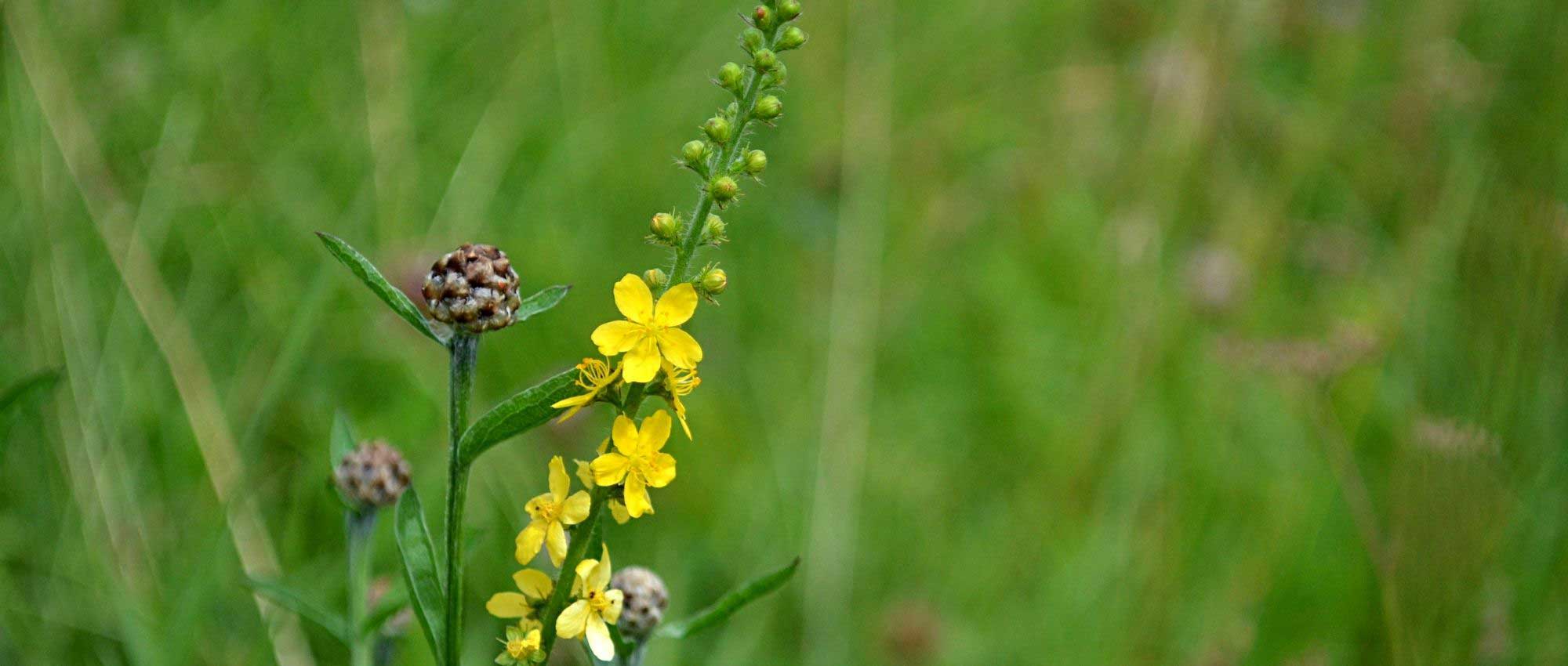
Agrimony: 5 successful pairing ideas
To create colourful and harmonious flower beds!
Contents
Agrimony is a lovely perennial that offers delicate floral spikes adorned with small yellow flowers in summer, and features beautifully cut foliage. With its light and airy stems, it has a very wild and natural style! It is also a medicinal plant with multiple properties (tonic, anti-inflammatory, astringent…), as well as a dye plant, providing a beautiful golden yellow colour to fabrics. Naturally growing in France, agrimony is a very easy plant to grow: it thrives ideally in full sun, in fresh, well-drained soil that is fairly rich (but it also tolerates poorer and drier soils), and it is very hardy, requiring little maintenance.
Discover our ideas and inspirations to pair agrimony in the garden and create harmonious flower beds!
In a naturalistic garden
As agrimony is a plant that grows naturally in France, requires little attention, and is appreciated by pollinating insects, it will easily find its place in a naturalistic garden! You can plant it in a wild area of the garden, allowing it to evolve relatively naturally, with minimal intervention. Pair agrimony with plants that have a light and airy habit, such as Gauras, Buenos Aires Vervains, or Verbena hastata, Knauties, Dipsacus fullonum, Echinops ritro, Veronicastrums… Prefer native plants found in nature in France, such as Yarrow, Wild Carrots, Foxgloves, Loosestrifes, Mulleins, and Thistles… Of course, integrate grasses, such as Pennisetums, Molinies, and Calamagrostis. Their fine foliage and very light flower spikes are irreplaceable for giving your garden a wild meadow feel. You will create a garden that is beneficial to biodiversity, where bees, butterflies, and other insects will come to forage and find refuge.
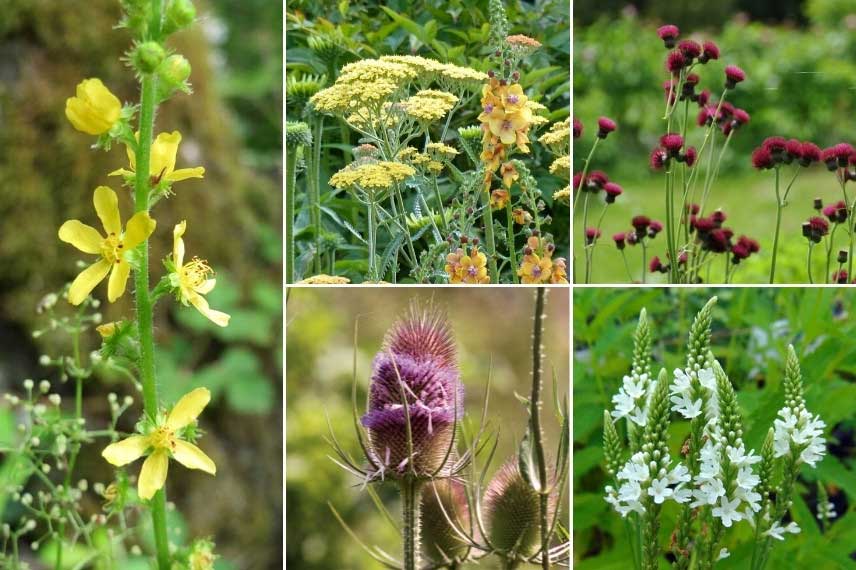
Agrimonia eupatoria, Achillea ‘Terracotta’ and Verbascum ‘Helen Johnson’, Cirsium rivulare ‘Atropurpureum’, Dipsacus fullonum (photo Michael Pierce), and Verbena hastata ‘Alba’
In a Vicar's garden
With its numerous medicinal properties, agrimony will easily find its place in a curate’s garden. This type of garden was originally a walled garden located next to the church and the rectory, allowing the curate or bishop to have vegetables, fruits, some medicinal plants, and flowers to adorn the altar. Its purpose was therefore utilitarian. It is a fairly simple garden, where plants are grouped in squares (raised beds or parterres bordered with boxwood, for example), mixing vegetables, fruit plants, medicinal plants, and flowers. For vegetable plants, we recommend prioritising heritage vegetables: parsnips, cardoon, orache, tuberous chervil, horseradish, lovage, sorrel, fennel… Incorporate aromatic and medicinal plants: wormwood, golden samphire, agastache, borage, yarrow, comfrey…
You can also simply create a medicinal plant garden. Gather plants that have therapeutic properties: sage, mallow, calendula, chamomile, echinacea, valerian, mint, marjoram, St. John’s wort… This way, you can easily prepare herbal teas or use them to make macerations, mother tinctures, balms, etc.
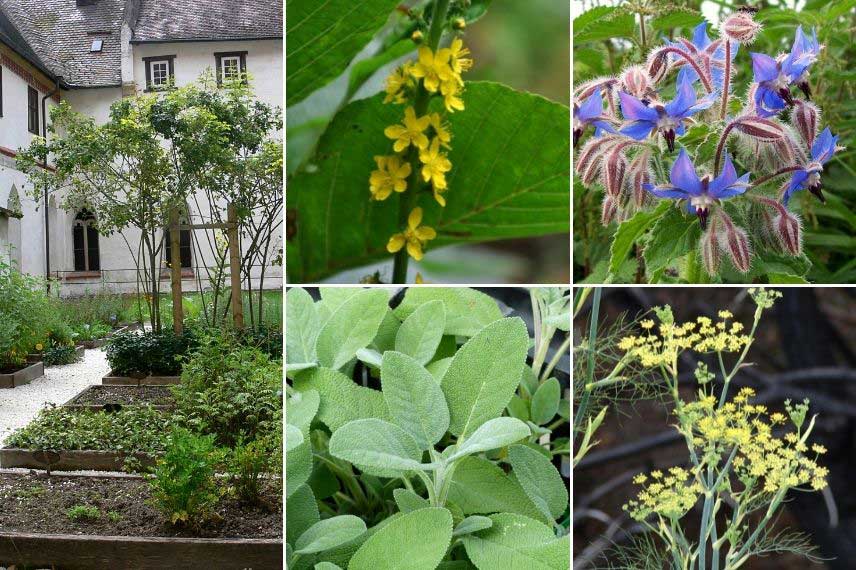
The garden of the Abbey of Blaubeuren, Germany (photo Andreas Praefcke), Agrimonia eupatoria (photo Lazaregagnidze), Borage, Common sage ‘Berggarten’, and Fennel Foeniculum vulgare (photo Forest and Kim Starr)
Discover other Agrimony
View all →Available in 1 sizes
Available in 1 sizes
With flowering in warm tones
Enjoy the vibrant flowering of agrimony to create a very colourful summer border, featuring warm shades: red, orange, yellow… Consider, for example, heliums, coreopsis, gaillardias, bidens, crocosmias, achilleas, rudbeckias… Take advantage of the majestic flowering of daylilies and the beautiful orange blooms of Achillea ‘Terracotta’. To add an exotic touch to the border, rely on the flowering of crocosmias and kniphofias! You can also incorporate some touches of purple or chocolate, which will beautifully complement these warm tones, or add a few white flowers to bring a bit of lightness and soften the border. This style of border creates a dynamic effect and enlivens the garden.
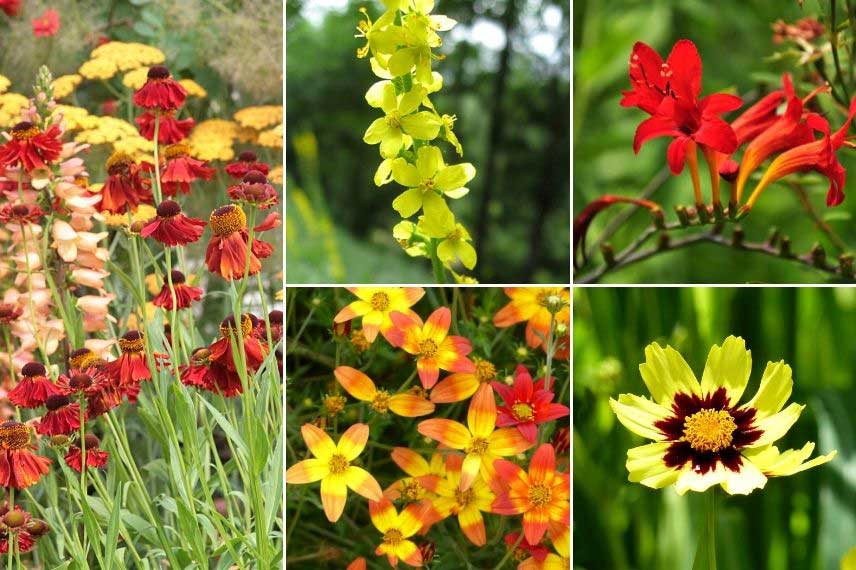
Scene featuring Helenium ‘Morheim Beauty’, Digiplexis illumination ‘Chelsea Gold’ and Achillea ‘Terracotta’, Agrimonia eupatoria (photo Joan Simon), Crocosmia masoniorum, Bidens ‘Campfire Fireburst’, Coreopsis ‘Cosmic Eye’
To bring brightness to a flower bed
Plant agrimony among darker-toned plants to brighten the bed and create a lovely contrast. For example, you can create a bed with black elder ‘Black Lace’, Physocarpus ‘Midnight’, Ophiopogon planiscapus ‘Nigrescens’, and heuchera ‘Obsidian’, all of which share very dark, almost black foliage. Plant agrimony among these plants and enhance its brightness with other yellow flowers (for example, those of Anthemis tinctoria, Centaurea orientalis or macrocephala), and light green – golden foliage: Pennisetum ‘Hameln Gold’, Salvia officinalis ‘Icterina’, Origanum vulgare ‘Aureum’… You will create a very original bed that establishes a fresh and modern atmosphere!
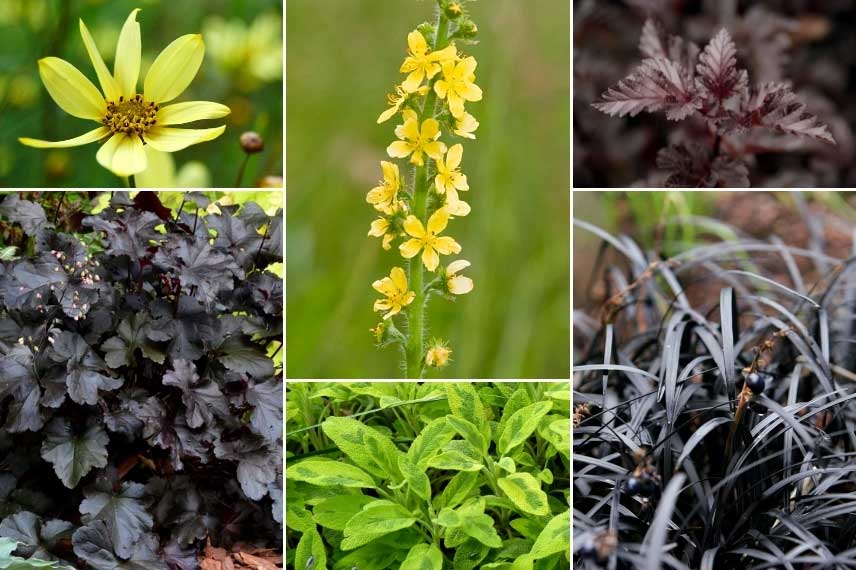
Coreopsis verticillata ‘Moonbeam’, Agrimonia eupatoria, Physocarpus ‘Midnight’, Heuchera ‘Black Pearl’, Salvia officinalis ‘Icterina’ and Ophiopogon planiscapus ‘Nigrescens’
To play with complementary colours
In the garden, it is interesting to combine complementary colours, which are found opposite each other on the colour wheel. This is the case, for example, with yellow and purple, or orange and blue. It brings dynamism and depth to the flower beds! As with the previous example (in black/golden yellow shades), we create a contrast, but this time with colours! You can therefore enhance the yellow hue of agrimony with other yellow flowers, and pair them with plants that have purple or possibly blue flowers. For example, with Salvia nemorosa, Nepeta, campanulas, lupin, Buenos Aires verbena, centauries, lavenders, Penstemons… Also discover the splendid Salvia guaranitica ‘Amistad Violet’ (to be grown as an annual, as it is tender).
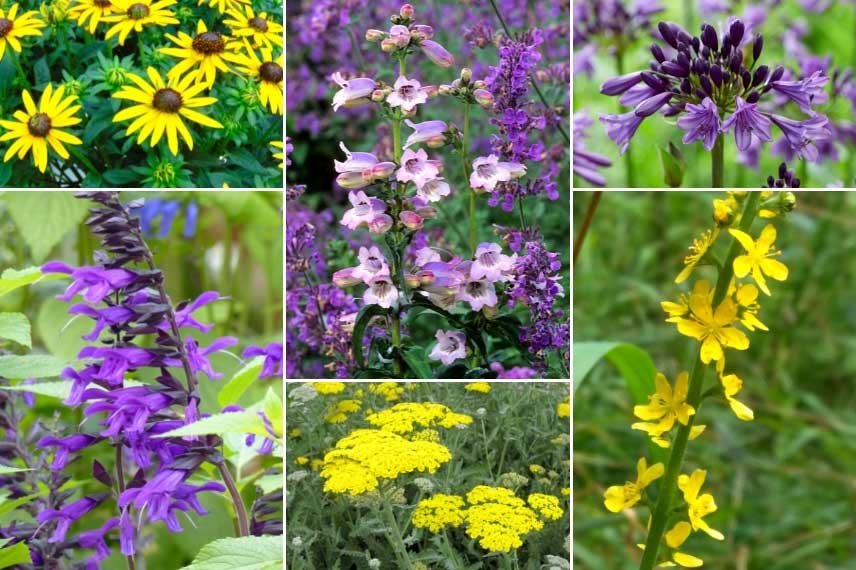
Rudbeckia fulgida ‘Little Goldstar’, Penstemon ‘Sour Grapes’ and Nepeta ‘Six Hill Giant’ (copyright Flora Press – Andrew_Lawson), Agapanthus ‘Poppin Purple’, Salvia guaranitica ‘Amistad’, Achillea ‘Moonshine’ and Agrimonia eupatoria (photo Donald Hobern)
- Subscribe!
- Contents
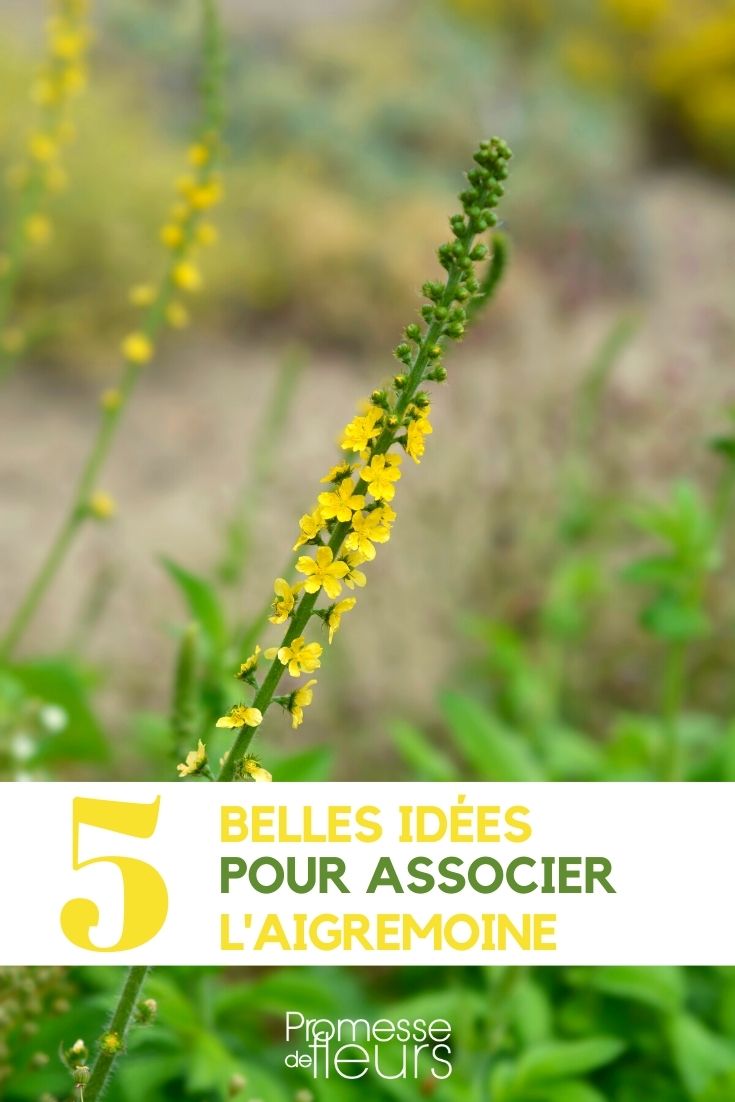































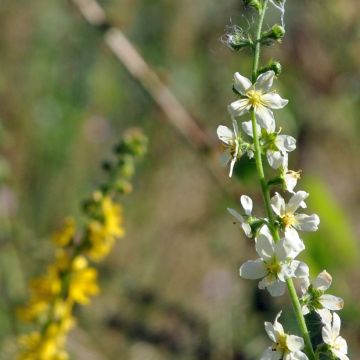
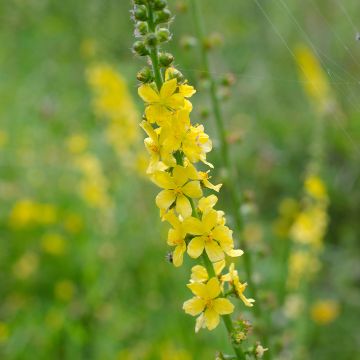
Comments